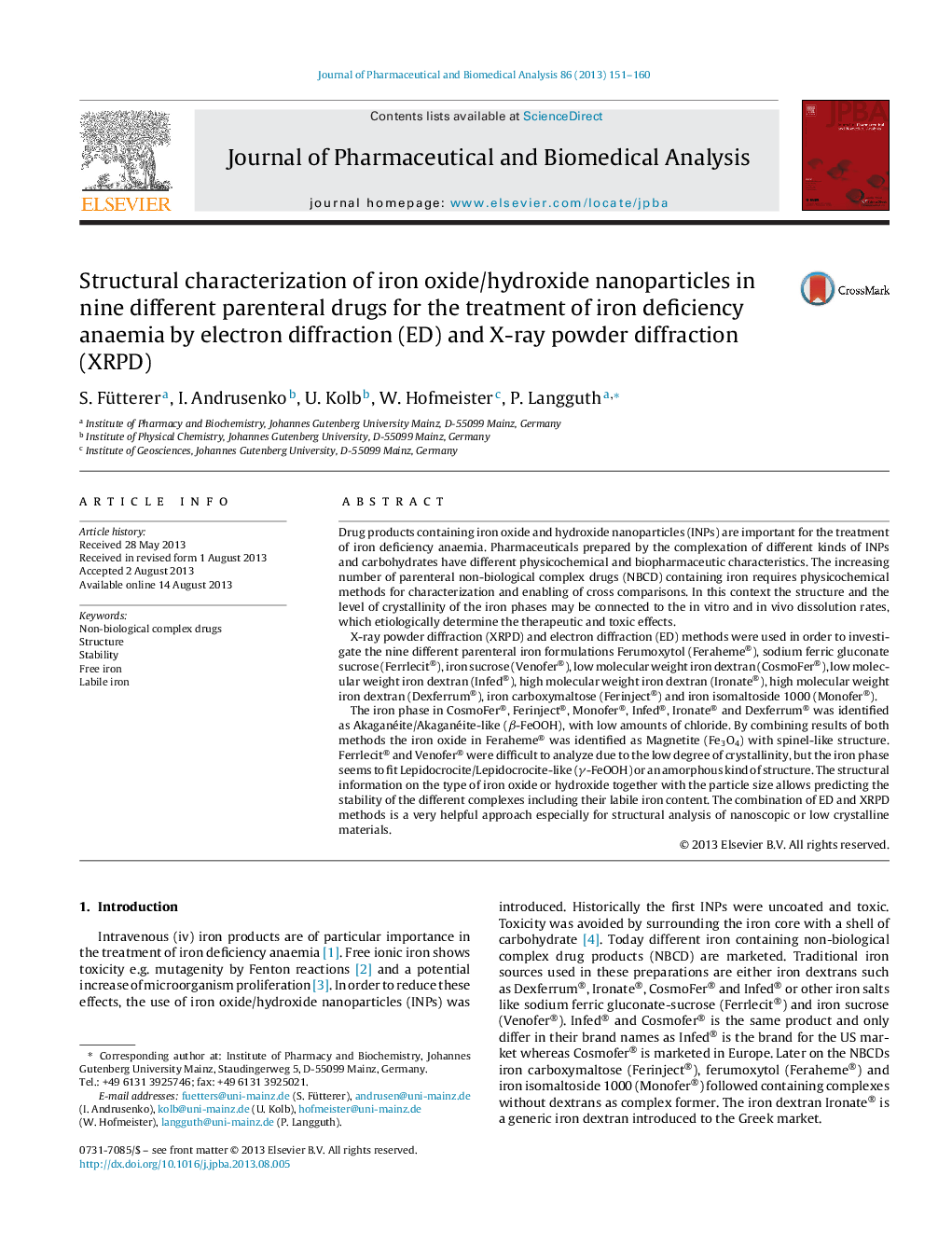| کد مقاله | کد نشریه | سال انتشار | مقاله انگلیسی | نسخه تمام متن |
|---|---|---|---|---|
| 1221890 | 1494649 | 2013 | 10 صفحه PDF | دانلود رایگان |

• Comparison of solid state properties of iron oxide/hydroxide nanoparticle products.
• Structural analysis allows prediction of stability including labile iron content.
• ED and XRPD represent useful techniques to characterize complex iron formulations.
Drug products containing iron oxide and hydroxide nanoparticles (INPs) are important for the treatment of iron deficiency anaemia. Pharmaceuticals prepared by the complexation of different kinds of INPs and carbohydrates have different physicochemical and biopharmaceutic characteristics. The increasing number of parenteral non-biological complex drugs (NBCD) containing iron requires physicochemical methods for characterization and enabling of cross comparisons. In this context the structure and the level of crystallinity of the iron phases may be connected to the in vitro and in vivo dissolution rates, which etiologically determine the therapeutic and toxic effects.X-ray powder diffraction (XRPD) and electron diffraction (ED) methods were used in order to investigate the nine different parenteral iron formulations Ferumoxytol (Feraheme®), sodium ferric gluconate sucrose (Ferrlecit®), iron sucrose (Venofer®), low molecular weight iron dextran (CosmoFer®), low molecular weight iron dextran (Infed®), high molecular weight iron dextran (Ironate®), high molecular weight iron dextran (Dexferrum®), iron carboxymaltose (Ferinject®) and iron isomaltoside 1000 (Monofer®).The iron phase in CosmoFer®, Ferinject®, Monofer®, Infed®, Ironate® and Dexferrum® was identified as Akaganéite/Akaganéite-like (β-FeOOH), with low amounts of chloride. By combining results of both methods the iron oxide in Feraheme® was identified as Magnetite (Fe3O4) with spinel-like structure. Ferrlecit® and Venofer® were difficult to analyze due to the low degree of crystallinity, but the iron phase seems to fit Lepidocrocite/Lepidocrocite-like (γ-FeOOH) or an amorphous kind of structure. The structural information on the type of iron oxide or hydroxide together with the particle size allows predicting the stability of the different complexes including their labile iron content. The combination of ED and XRPD methods is a very helpful approach especially for structural analysis of nanoscopic or low crystalline materials.
Figure optionsDownload as PowerPoint slide
Journal: Journal of Pharmaceutical and Biomedical Analysis - Volume 86, December 2013, Pages 151–160